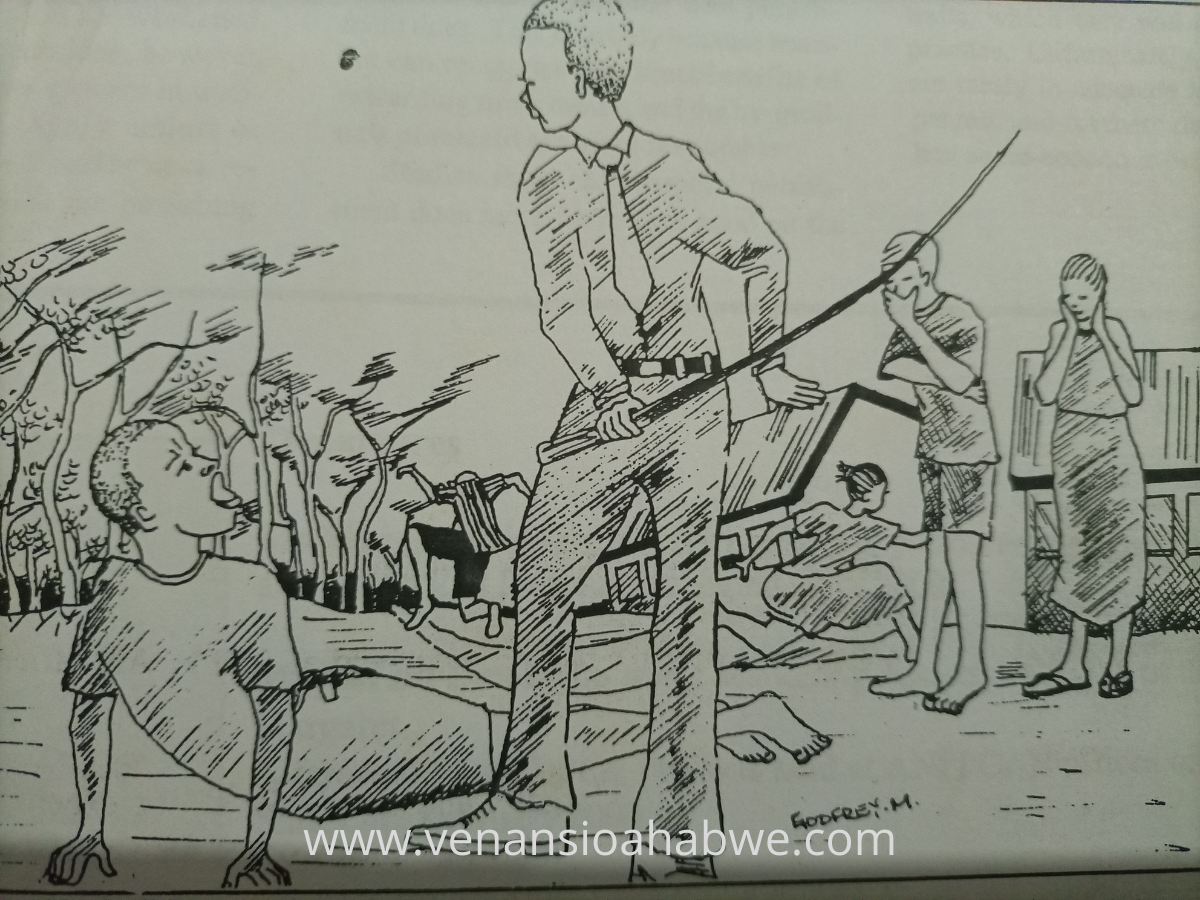
Just How Far Does Caning Go In Enforcing Discipline?
- Category: Children
- Date 12-03-2000
- 1042 views
Studies show that corporal punishment does more harm than good on the attitude of the person punished. The principle of positive effect of punishment is that it only makes the punisher feel better. It thus generates effects both undesirable and misleading to the punisher.
Child upbringing is a demanding task. It does not involve the joys of appreciating the existence of our own offspring but also the strain wherein the parent must keep close to the young and assist enhancing their proper growth: physically, morally, spiritually and intellectually.
It is along this line that corrective measures are employed on the child. The corrective process helps the child to learn the acceptable behavior, skills and attitudes. In this way, the guiding adult may use positive reinforcers in form of rewards (praise, gifts, encouragement etc.) or negative reinforcers (mainly punishment). Both the methods instill in and direct the child towards the desirable discipline. Discipline is one of the fundamentals for every child’s upbringing, a cardinal foundation to the child’s behavior and a source of any child’s sense of direction.
Clearly, however, disagreement still rages on whether or not caning is a suitable method of promoting children’s discipline and how effective it is in helping young people grow into responsible citizens. To the proponents of caning as a negative reinforcer, it is the most effective, convenient and timesaving mode of punishment. Immediately applied, it can produce instant impact against the punished habit. As a disciplinary measure, caning is far from being disastrous to the child provided the punisher knows where it is going to lead the child and works it out carefully. It is believed that punishment - the infliction of some kind of pain or loss upon someone for a misdeed - is a mode of “habit breaking” which is the most commonly tried. Flogging therefore has become one of the commonest methods of instilling and preserving discipline in schools and homes.
On the other hand, this has often degenerated into unthinkable violence against children. Due to excessive anger and enthusiasm in administering punishment to children, flogging is sometimes executed with great brutality! The back and body of the condemned child is frequently lacerated, resulting into lameness or even death. This is violence at its extreme. Yet some communities regard violence against children particularly beating, as part of life. It is noteworthy that most child beaters are genuine disciplinarians who mean good for their children; and whose method of disciplining children is founded on some seemingly “acceptable norms” such as the ancient adage, “Spare the rod and spoil the child”, or the Holy bible’s, “Do not withhold discipline from a child: if you beat him with a rod he will not die – you will save his life…” (Proverbs 23:13-14).
Clearly, the above references present an emphatic affirmation of the power and impact of proper disciplinary measures on children; as opposed to the literal application of the rod (cane) in the process. Parents, teachers and society needn’t punish their children furiously, yet they have to enforce suitable discipline in them. Today, many experts believe that child abuse is widespread because society regards physical punishment as a reasonable way of changing children’s behavior vis-à-vis the narrow definition of child abuse limited to life threatening, physical violence, including severe beatings. Thus, adults who hurt children sometimes only intend to correct them, and do not realize how easily children can be hurt.
The question in evaluating the effects of punishment, is whether substituting a negative reinforce for reward produces any more rapid habit loss. Necessarily, if a habit is punished, some extinction will occur. It does not altogether break but it is suppressed by surrounding it with fear.
It has been suggested that the principle of positive effect of punishment is that it only makes the punisher feel better. It generates effects both undesirable and misleading to the punisher, by producing sullen, frightened and other emotional behaviour. The punishment-generated emotion is likely to give a false impression that the habit has weakened. When the emotion subsides, however, the punished response appears in undiminished strength. Again, unjust or over-strict punishment builds up a resentful attitude towards the punishing authority and towards society in general.
The best way to teach acceptable behavior to the young ones is by emphasizing “Positive Reinforcement”. The children’s guiding personality, a parent or teacher, should be a good model for them to imitate. They must have an emotional attachment for the people guiding them. Then, every positive progress they make should be recognized, praised and rewarded. This will help in overcoming a previously existing unlikable habit, because a habit may become inactive if some other response is reinforced to become so strong as to literary crowd out the previous one. It is said that rewards serve as more effective aids of learning than punishment does. This is largely because learners can recognize the direct benefits of rewarding more easily, and the by-products of reward are more favourable.
Studies show that corporal punishment does more harm than good on the attitude of the person punished. Undeniably, caning has some positive effect, however little, but our children deserve to be exposed to the greater good. The parents, teachers and all responsible adults should, first and foremost, be available and close to the children behaving in a way that they wish for their children to emulate. They must not wait for the children to make mistakes and then cane them. Children need to be told, shown and exposed mainly to the desirable traits, which they will internalize and practice. Unfortunately, many children are rarely in adequate touch with their parents and teachers due to the prevalent socio-economic order today.
By Venansio Ahabwe
Source: Child-Link Magazine
